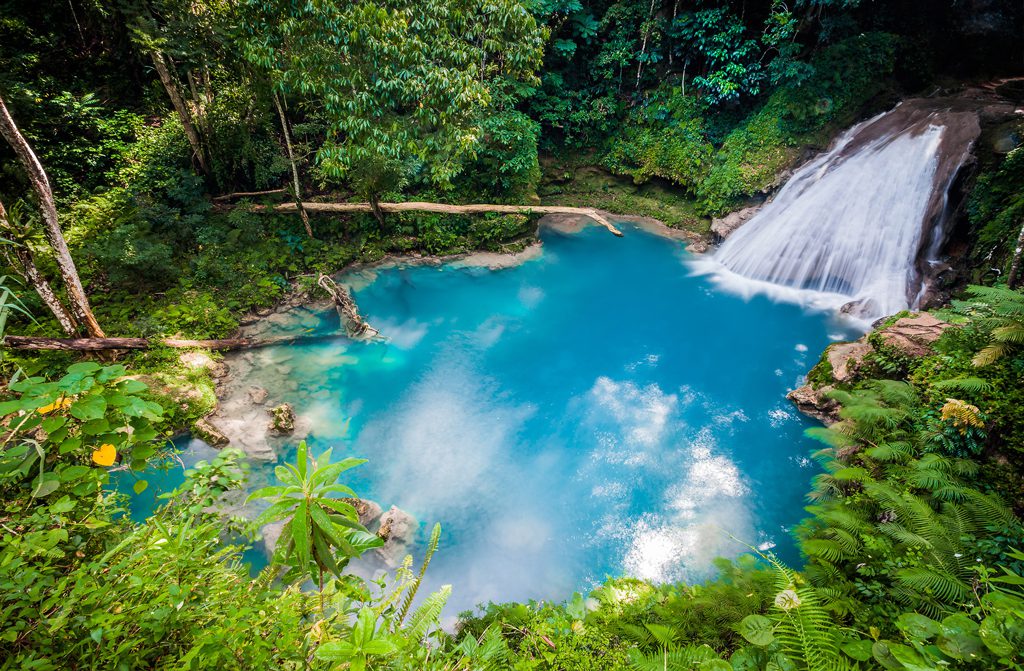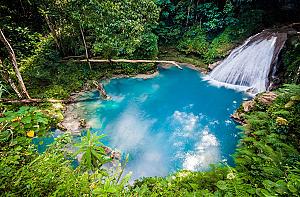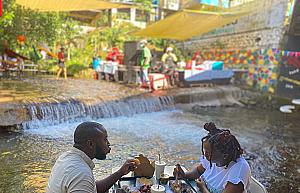Portland
,
Description
Portland is a parish on the northeast coast of the island of Jamaica. Port Antonio is the small, laid-back capital, with faded colonial-era mansions lining the Titchfield Peninsula.
Sandy beaches fringe the forested coast between the city and the deep waters of the Blue Lagoon farther east. Inland, bamboo rafts ply the Rio Grande river. Trails cross the Blue Mountains, known for their coffee plantations.
Local Attractions/ Places of Interest
Somerset Falls
Tumbling down the hillsides, Daniel’s River makes a beautiful painting of the landscape. Miniature waterfalls along the narrow gorge add to this awesome scenery, with the mist and the steady rush of water blotting out the outside world.
The Nonsuch Caves
As the popular story goes, these caves were “rediscovered” in 1957 by a goat that seemed to have lost its way. Mother Nature seems to have used her free hand to create similar structures to what man has created to adorn the chambers.
Blue Lagoon
A 55-metre (180 ft) deep extinct volcano, surrounded by lush tropical foliage fed by underground streams feed the Blue Lagoon. In its heyday, this area was famous for water skiing.
Rio Grande
In recent times, rafting on this river has become a great tourist attraction. Rafting starts at Berrydale and continues for about 4 kilometres ending at Rafter’s Rest.
Reach Falls
Situated in Manchioneal, these breathtaking falls are a scenic highlight of the area.
Crystal Springs
This is a recreational centre which boasts 156 acres. Among the facilities offered are fishponds and river, picnic grounds and a garden.
Navy Island
Seven minutes by boat from Port Antonio. Attractions include a guided tour by reservation. There are also cottages and villas, a marina bar, restaurant and white sand beach with water sporting activities.
Titchfield School
The main building of Titchfield was at one time a military barracks, built in 1743 to protect planters against invasion and attacks from the Maroons. Fort George, which overlooks the harbour, was built in 1729. Titchfield was founded in 1786 as a “free” school for the education of the youth of the parish.
Fair Prospect Comprehensive High School
This is the location of the Fair Prospect Windmill Tower. The Tower was used to lift water from an underground source, which is now a dry cave. The tower was converted to a residence; however, the integrity of the exterior of the windmill is maintained.
Seaman’s Valley
This property has on it the ruins of the Seaman’s Valley Great House and the first European cemetery in this area of Portland. Here George Fuller, famous English superintendent of the Moore Town Maroons was buried. The Seaman’s Valley road leads to Moore Town, the oldest settlement of the entire valley, and also to the headquarters of the Eastern Maroons.
Cenotaph – Port Antonio
The Cenotaph, Port Antonio, is situated opposite the market. It was erected in 1929 by voluntary subscription and is dedicated to those who died in the First World War.
Old Nanny Town
Situated on Nanny Town Hill High above sea level, this was the most famous settlement of the Maroons. It had over 140 houses, most of which were burnt by the militia and rebuilt by the Maroons during the four years of fighting which preceded the treaty.
It has been named after Nanny, the great Maroon leader who brought the Maroon many of their victories during the first Maroon War. Built around 1723, it was not discovered by the English until 1728, when Sambo, an African led them to it.
Today there is little to see, but the ruins of the barracks built by the occupying troops between 1734 and 1740. A plaque commemorates the occupancy of Nanny Town by Colonel Brooks and the British troops under him.
Moore Town (New Nanny Town)
In 1739, Cudjoe, Nanny’s brother, signed a peace treaty with the British. The Maroons thereby became the first group of blacks to succeed in gaining their freedom from their colonial masters. Nanny, however, refused to sign a treaty with the British but agreed to a truce. Nanny’s Maroons, after the truce, divided themselves into two groups, one of which went with her brother Quaco to Crawford Town and the other group followed Nanny to a new settlement, New Nanny Town, now called Moore Town.
Similar Attractions
Folly Point Lighthouse has been the steadfast maritime guardian since 1888, flashing its white light...
Tucked away on the northeast coast, Winnifred Beach is a true local gem—clear blue water, soft white...
East of Port Antonio along Alan Avenue stands the Folly Ruins. Once the most opulent house in Jamaic...










